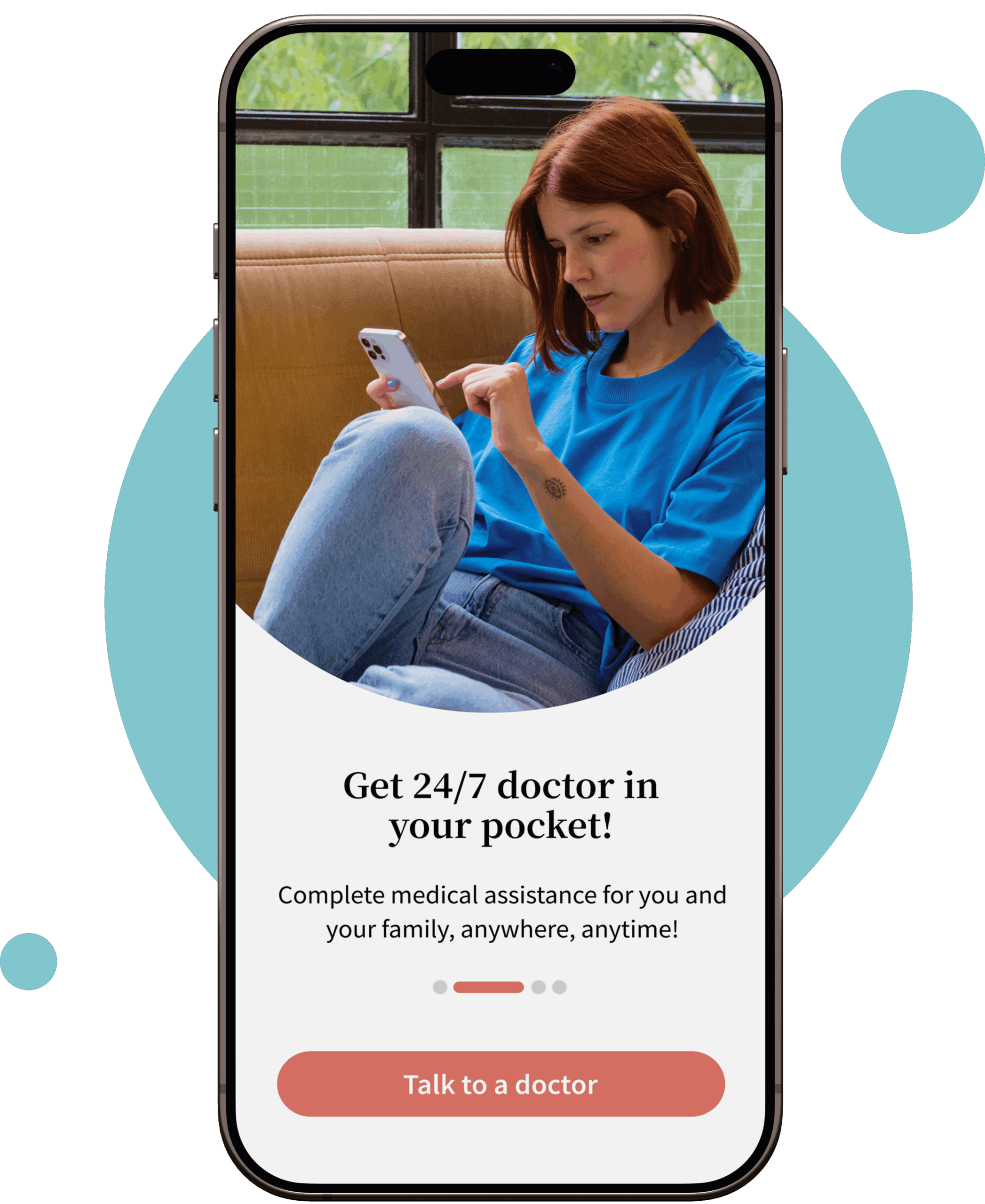Table of Contents
ToggleOverview
Labile hypertension is the term used to define a person’s blood pressure that fluctuates frequently between normal and high. In the case of labile hypertension, the blood pressure fluctuates more spontaneously. Hypertension is a blood pressure reading 130/80 mm Hg or higher.
Labile hypertension is when a person’s blood pressure is not constantly within normal ranges but also not consistently high.
What does labile hypertension feel like?
Labile hypertension symptoms are mainly as follows:
- Ringing in the ears
- Palpitations
- Headache
- Dizziness
- Facial flushing
- Lethargy
What are the causes of labile hypertension?
Labile hypertension causes are primarily classified into anxiety and stress. Everyday situations could cause this condition, such as receiving bad news or awaiting your results.
Various factors can affect your blood pressure, including:
- Age
- Consuming too much salt
- Consuming too much caffeine
- Drinking alcohol
- Drug abuse
- Certain prescription medications
How do you diagnose labile hypertension?
There isn’t a specific criterion for diagnosing labile hypertension. People experience blood pressure fluctuations within minutes, and there isn’t an established threshold at which this becomes labile hypertension.
In addition, a person with white coat hypertension in conjunction with labile hypertension might falsely indicate persistent hypertension. In this case, a person is advised to regularly use a blood pressure monitor at home to record blood pressure spikes and drops.
Additionally, a doctor may also recommend undergoing 24-hour ambulatory blood pressure monitoring to check the blood pressure readings and determine what causes blood pressure to fluctuate. So that might ultimately answer why my blood pressure goes up and down.
This device is meant to be worn during sleeping, eating, and exercise periods to understand better how blood pressure fluctuates throughout the day.
How do you treat labile hypertension?
Currently, there is no specific treatment specifically for labile bp. The treatment plan is drawn up according to the symptoms instead and is focused on managing the fluctuating blood pressure by helping to reduce anxiety and stress.
Short-term anti-anxiety medication can help manage the symptoms of anxiety.
This medication commonly prescribed includes:
- Alprazolam (Xanax)
- Lorazepam (Ativan)
- Clonazepam (Klonopin)
- Diazepam (Valium)
However, these short-term options help reduce anxiety symptoms within an hour but are suitable for long-term use.
Some long-term anti-anxiety medications that may help prevent anxiety include:
- Sertraline (Zoloft)
- Citalopram (Celexa)
- Escitalopram (Lexapro)
- Paroxetine (Paxil)
Individuals with labile hypertension can get a blood pressure monitor at home as it may be helpful for those experiencing white coat hypertension instead of rushing to the doctor to monitor their blood pressure.
How can you prevent labile hypertension?
To minimize the risk of labile hypertension, the following measures may help:
- Managing stress and avoiding stressful situations
- Working anxiety levels with the help of meditation and relaxation techniques
- Quitting smoking
- Limiting the amount of salt and alcohol
- Avoiding using drugs
Lifestyle changes and modifications help manage stress to a large extent.
Complications
Even a temporary increase in blood pressure can strain your heart and other organs. If these spikes in blood pressure recur, they may cause damage to your heart, kidneys, blood vessels, and eyes.
Furthermore, fluctuations in blood pressure are dangerous for people with preexisting health conditions and can cause angina, cerebral aneurysms, or aortic aneurysms.
Untreated labile hypertension puts an individual at higher risk of heart conditions and may eventually increase mortality. Untreated labile hypertension increases the risk of:
- kidney damage
- stroke
- transient ischemic attack
Some Other Types of Hypertension
White Coat Hypertension
White coat hypertension is high blood pressure at your doctor’s office or in a medical setting, but not in other scenarios. It’s not uncommon for people to experience anxiety when they visit a medical office. However, this nervousness can elevate your blood pressure. White coat hypertension can be combated by relaxing your body and learning how to manage anxiety.
Paroxysmal Hypertension
Paroxysmal hypertension is episodic high blood pressure, possibly because of anxiety or pheochromocytoma. A pheochromocytoma is a form of tumor in the adrenal medulla.
Symptomatic paroxysmal high blood pressure generates suspicion of a catecholamine-secreting pheochromocytoma. However, the truth is this tumor is hardly ever discovered among patients who face paroxysmal hypertension.
The cause of paroxysmal hypertension is unknown, and the treatment is not simple.
Masked Hypertension
Masked hypertension is described as normal blood pressure during a visit to the doctor’s office, but the blood pressure elevates outside the setting. Almost 10% of the overall population experience masked hypertension.
Masked hypertension occurs in young males with anxiety, accelerated daytime activities, and smoking habits. Moreover, it is suspected in people who have a record of occasional excessive BP readings. Note that it is essential to track blood pressure for proper diagnosis.
What is the difference between labile hypertension and paroxysmal hypertension?
Often labile hypertension is confused with paroxysmal hypertension. Paroxysmal hypertension is also called erratic blood pressure, as the person’s blood pressure fluctuates dramatically or jumps up and down.
Labile hypertension is attributed to a specific situation, and the blood pressure goes up and down within minutes, usually triggered by stressful events. In contrast, paroxysmal hypertension randomly results in inconsistent blood pressure readings.
Moreover, labile hypertension may be symptomatic or asymptomatic, whereas paroxysmal hypertension presents with the following symptoms:
- Headache
- Flushing
- Shortness of breath
- Weakness
- Palpitations
- A fear stroke
Evidence suggests that paroxysmal hypertension is linked to severe emotional trauma that is repressed.
When to consult a doctor for hypertension?
Intermittent high blood pressure or unmanaged labile hypertension can cause various health problems in the longer run. However, as the condition is hard to detect, motoring for labile blood pressure is essential. Even temporary increases in blood pressure levels may negatively impact a person’s body as it can strain the heart. Therefore, blood pressure monitoring is critical and can be done at home. Since labile hypertension is induced by anxiety, managing anxiety is the best possible treatment option.
If you have noticed that your blood pressure is high or readings are not in the normal range, you can contact our doctor at Your Doctors Online for further evaluation through online consultation.
FAQs About Hypertension Answered by Your Doctors Online Team
Phenylephrine eye drops can result in an elevation of blood pressure elevation and have systemic side effects.
Currently, there is no specific treatment specifically for labile hypertension. Therefore, the treatment plan is devised according to the symptoms instead and is focused on managing the fluctuating blood pressure by helping to reduce anxiety and stress.
Anxiety can cause different blood pressure readings within minutes. In addition, stress can lead to spikes in blood pressure. Therefore, it is essential to manage anxiety to prevent long-term complications or adverse effects on health.







